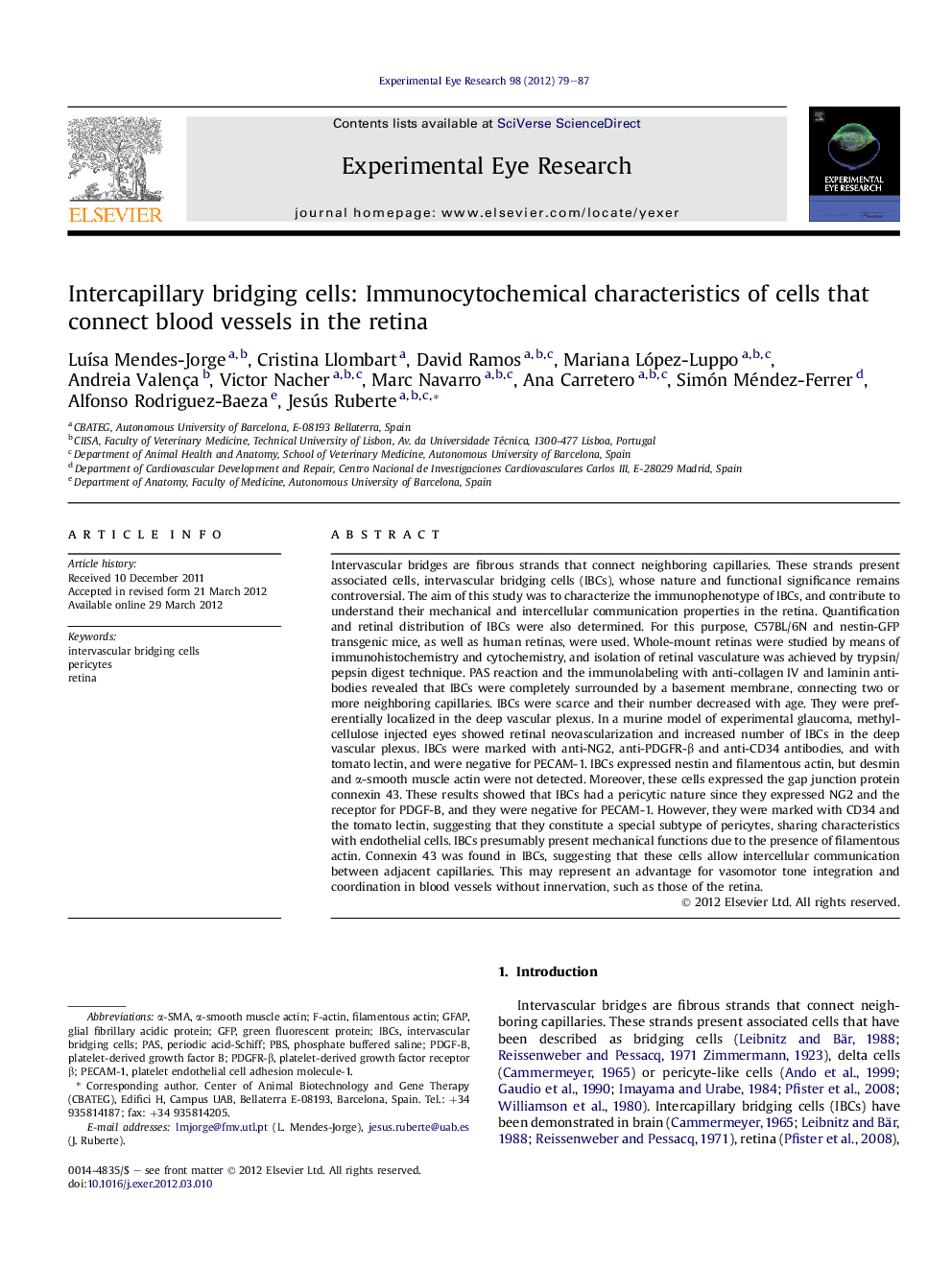| کد مقاله | کد نشریه | سال انتشار | مقاله انگلیسی | نسخه تمام متن |
|---|---|---|---|---|
| 4011412 | 1602624 | 2012 | 9 صفحه PDF | دانلود رایگان |

Intervascular bridges are fibrous strands that connect neighboring capillaries. These strands present associated cells, intervascular bridging cells (IBCs), whose nature and functional significance remains controversial. The aim of this study was to characterize the immunophenotype of IBCs, and contribute to understand their mechanical and intercellular communication properties in the retina. Quantification and retinal distribution of IBCs were also determined. For this purpose, C57BL/6N and nestin-GFP transgenic mice, as well as human retinas, were used. Whole-mount retinas were studied by means of immunohistochemistry and cytochemistry, and isolation of retinal vasculature was achieved by trypsin/pepsin digest technique. PAS reaction and the immunolabeling with anti-collagen IV and laminin antibodies revealed that IBCs were completely surrounded by a basement membrane, connecting two or more neighboring capillaries. IBCs were scarce and their number decreased with age. They were preferentially localized in the deep vascular plexus. In a murine model of experimental glaucoma, methylcellulose injected eyes showed retinal neovascularization and increased number of IBCs in the deep vascular plexus. IBCs were marked with anti-NG2, anti-PDGFR-β and anti-CD34 antibodies, and with tomato lectin, and were negative for PECAM-1. IBCs expressed nestin and filamentous actin, but desmin and α-smooth muscle actin were not detected. Moreover, these cells expressed the gap junction protein connexin 43. These results showed that IBCs had a pericytic nature since they expressed NG2 and the receptor for PDGF-B, and they were negative for PECAM-1. However, they were marked with CD34 and the tomato lectin, suggesting that they constitute a special subtype of pericytes, sharing characteristics with endothelial cells. IBCs presumably present mechanical functions due to the presence of filamentous actin. Connexin 43 was found in IBCs, suggesting that these cells allow intercellular communication between adjacent capillaries. This may represent an advantage for vasomotor tone integration and coordination in blood vessels without innervation, such as those of the retina.
► Distribution, number and immunophenotype of IBCs were studied in mouse and human retinas.
► IBCs are scarce, and localized in the deep and superficial vascular plexi.
► IBCs are pericytes which share characteristics with endothelial cells.
► IBCs may have mechanical functions due to the presence of F-actin and nestin.
► IBCs express connexin 43 suggesting intercellular communication between adjacent capillaries.
Journal: Experimental Eye Research - Volume 98, May 2012, Pages 79–87